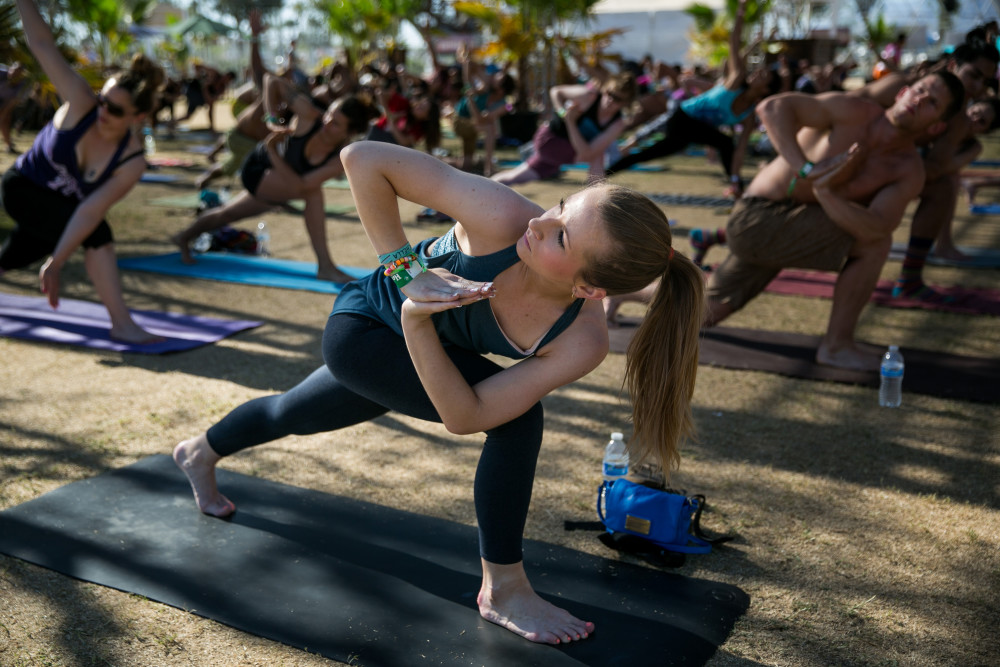By Maura Dolan
Los Angeles Times.
For years, Bikram Choudhury, the Beverly Hills yoga magnate and self-styled “Yogi to the stars,” has threatened competing studios with legal action.
He claimed that he alone had the right to determine who could teach his sequence — 26 poses that include Rabbit, Camel, Locust and Dead Body — that he popularized in a book more than three decades ago.
A federal appeals court disagreed, ruling Thursday that Choudhury’s method was not protected by copyright law and that competitors could not be held liable for teaching it.
“Consumers would have little reason to buy Choudhury’s book if Choudhury held a monopoly on the practice of the very activity he sought to popularize,” Judge Kim McLane Wardlaw wrote for a three-judge panel of the U.S. 9th Circuit Court of Appeals.
She described the Bikram succession of poses and two breathing exercises as “an idea, process, or system designed to improve health” and to “yield physical benefits and a sense of well-being.
“Copyright protects only the expression of this idea — the words and pictures used to describe the sequence — and not the idea of the sequence itself,” she wrote.
The decision was the latest setback for Choudhury, who was born in India and made a fortune with his style of “hot yoga.” He has been hit with several lawsuits claiming he sexually harassed and assaulted women, which he denies. His lawyers and his Los Angeles-based corporation did not respond to requests for comment Thursday.
The decision against Choudhury came in an appeal of a district judge’s ruling in favor of Evolation Yoga, a Florida studio that Choudhury accused of copyright violation.
Eric Maier, Evolation’s lawyer, described the 9th Circuit ruling as “a very big victory for yoga studios and practitioners everywhere.”
Maier said Choudhury has been “bullying” yoga studios for years in an attempt to have the sole right to teach the 26 poses in the order he developed. Choudhury’s corporation regularly sent studios letters threatening legal action, Maier said, and many buckled. His client fought back.
“He would have had a monopoly on yoga classes that incorporated the postures,” Maier said.
Cydney Tune, a lawyer for Yoga Alliance, a nonprofit association of yoga teachers, training schools and studios, noted that yoga poses are thousands of years old and in the public domain.
A copyright on the order in which poses are done would have meant huge legal risks for all kinds of exercise instructors, said Tune, an expert in copyright law.
“If you were an instructor, you could be infringing copyrights if you had your push-ups follow your flys,” Tune said. “Everybody would be afraid.”
She likened the sequence of poses to a recipe, which cannot be copyrighted.
“Everyone will have the freedom to teach and practice yoga without worrying they will be infringing a copyright based on the order in which they did the poses,” she said.
Choudhury, who holds classes in a black Speedo bathing suit and a Rolex watch, was born in Calcutta and began studying yoga at the age of 4. He went to Beverly Hills in 1971 and “soon became a central figure in the growing popularity of yoga in the United States,” the court said. He has claimed that his methods have extended the careers of professional athletes, including Kareem Abdul-Jabbar and John McEnroe, and he counts many movie stars among his clients.
His website, Bikram Yoga College of India, asks people to report “illegal” Bikram studios.
Although some studios have agreed not to use his exact technique, others sued him several years ago for asserting his copyright claims. The confidential settlement reportedly included a pledge by the studios not to use the Bikram name.
Choudhury’s sequence of poses are done over 90 minutes in a room heated to 105 degrees. Evolation Yoga had a class that followed this formula.
The 9th Circuit, citing a study that found the method produces a substantial cardiovascular response and muscle fatigue, compared it to a surgeon’s methods.
“The copyright for a book describing how to perform a complicated surgery does not give the holder the exclusive right to perform the surgery,” Wardlaw wrote.
“Like the series of movements a surgeon makes, the sequence is, as Choudhury tells readers, a method designed to ‘cure, heal, or at least alleviate’ physical injuries and illness.”
Tim Torkildson, 62, a Utah resident who does yoga every day, said he was stunned to learn that Choudhury had tried to copyright his sequence after reading about the ruling on The Times’ website.
“Yoga goes to court,” the retiree said. “It seems very strange. There should be some kind of pose for that — the gavel position.”














































































































































































































































































































































































